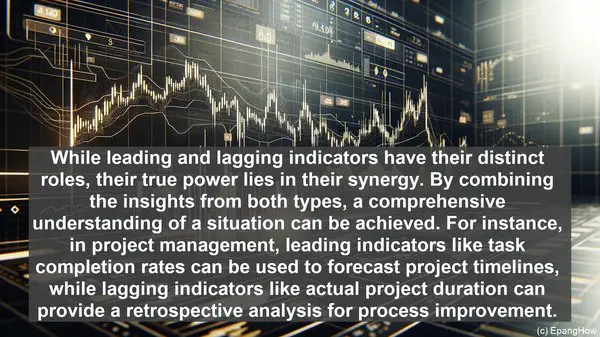Introduction: The Crucial Role of Indicators in Data Analysis
Greetings, data enthusiasts! In the vast landscape of data analysis, indicators serve as guiding lights, illuminating the path to informed decision-making. Today, we’ll embark on a journey to understand the contrasting nature of leading indicators and lagging indicators, and how they contribute to the overall data analysis framework.
Defining Leading Indicators: Peering into the Future
Leading indicators, as the name suggests, are forward-looking. They provide insights into potential outcomes and trends, acting as precursors to future events. These indicators are often used to anticipate changes, plan strategies, and make proactive decisions. For instance, in the stock market, leading indicators like the volume of trades or the number of new accounts opened can hint at future market movements.

Unveiling Lagging Indicators: Reflecting on the Past
Unlike leading indicators, lagging indicators are retrospective in nature. They assess past performance, serving as a measure of what has already occurred. Lagging indicators are commonly employed to evaluate the effectiveness of strategies or actions that have been implemented. For instance, in the context of employee performance, lagging indicators can include metrics like sales revenue or customer satisfaction scores, which reflect the outcomes of previous efforts.
The Timing Factor: Leading vs. Lagging
One of the key distinctions between leading and lagging indicators lies in their timing. Leading indicators, being predictive, often precede the occurrence of an event. On the other hand, lagging indicators, being retrospective, follow the event. This temporal contrast is crucial when it comes to decision-making. While leading indicators can aid in proactive planning, lagging indicators provide a retrospective lens for evaluation and adjustment.
Applications in Various Domains: From Finance to Operations
The utility of leading and lagging indicators extends across diverse domains. In finance, leading indicators like interest rates or consumer spending patterns can guide investment decisions. Lagging indicators, such as financial statements, can offer insights into the financial health of an organization. Similarly, in operations management, leading indicators like order backlog can assist in capacity planning, while lagging indicators like production output can gauge efficiency.
The Interplay: Leading and Lagging Indicators in Conjunction
While leading and lagging indicators have their distinct roles, their true power lies in their synergy. By combining the insights from both types, a comprehensive understanding of a situation can be achieved. For instance, in project management, leading indicators like task completion rates can be used to forecast project timelines, while lagging indicators like actual project duration can provide a retrospective analysis for process improvement.

